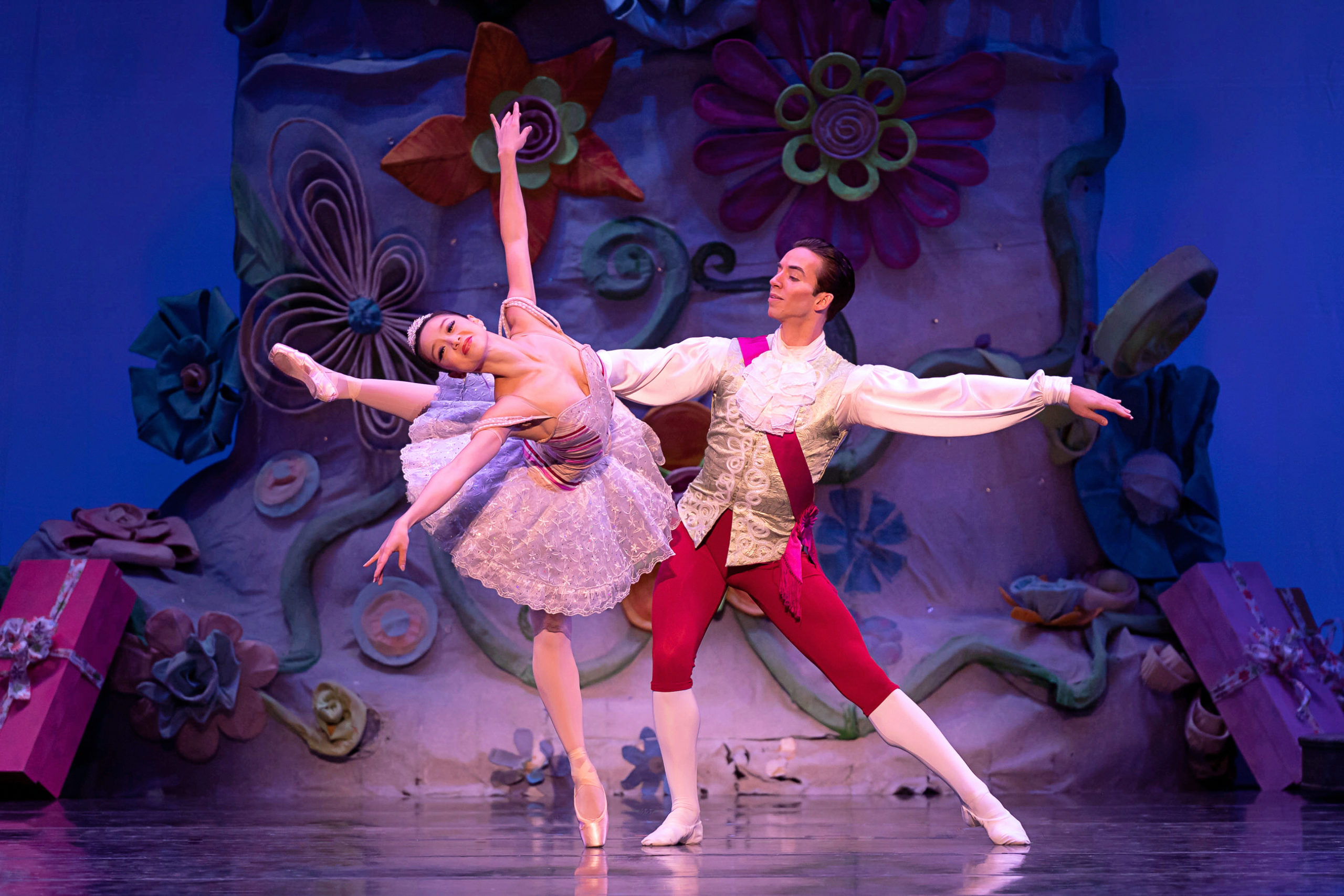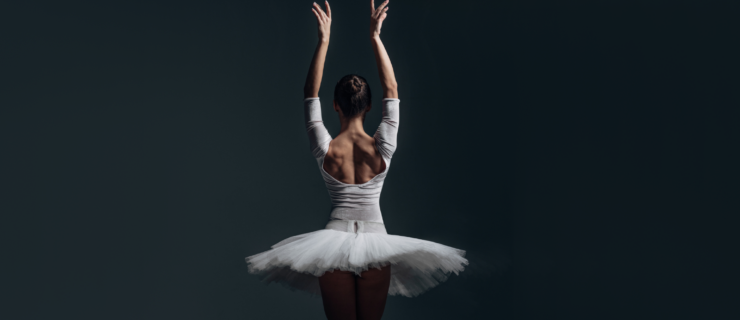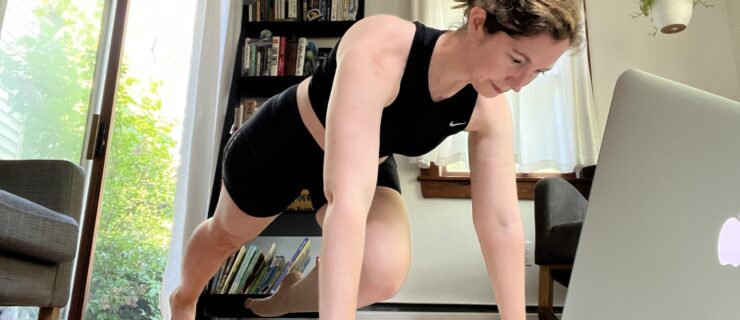Nutcracker Tips for Surviving Double-Show Days
’Tis the season for the Nutcracker grind. Throughout the next month, companies will be staging the Tchaikovsky classic, some doing multiple runs over several weeks. That means packed days for dancers, many of whom will juggle two performances in one day. San Francisco Ballet corps member Gabriela Gonzalez likens it to running a marathon.
“We dance Tuesdays through Sundays and have two performances almost every day,” she explains. “Sometimes I leave the theater around 11:30 pm or midnight, and by the time I go to bed, it’s, like, 1 am. Then I wake up the next day to do it all over again.”
Thankfully, Gonzalez, who joined SFB in 2017, has learned how to take care of her body to meet the demands of a grueling performance day. Below, she and other experienced dancers and health experts share their tips on how to set yourself up for a successful Nutcracker run.
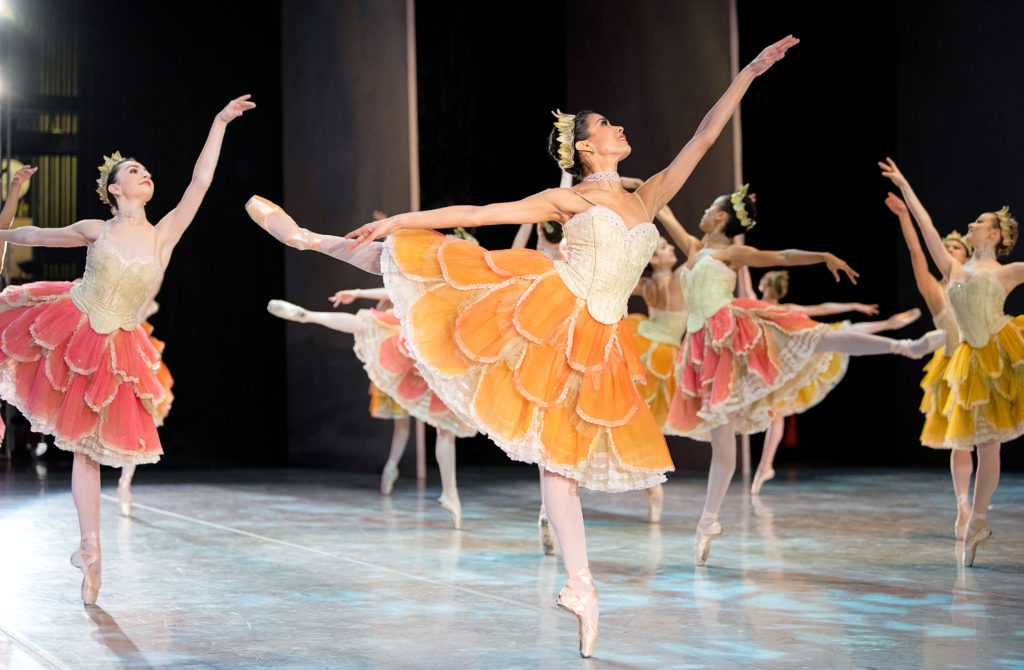
Stretching for Performance and Recovery
During a typical double-show day, Gonzalez may perform up to three different roles per performance. In past years, she has been cast as a maid or party parent, and then had to do a quick-change for the snow scene. For Act II, she has danced in “Arabian,” “Spanish,” “Waltz of the Flowers” or “Mirlitons.”
Gonzalez says stretching her most overworked muscles throughout the day, especially after class and performing, makes a difference.
“I’ve figured out what muscles I use the most or tend to get injured [more easily], so I focus on those areas,” says Gonzalez. This is different from stretching simply for higher extensions. Instead, she concentrates on stretching her lower legs, glutes and turnout muscles. “Everyone is different.”
Lauren McIntyre, ATC, with NYU Langone’s Harkness Center for Dance Injuries, says a dynamic yoga flow can help wake up the body in the morning and serve as an active recovery method in-between shows. At the end of the day, “hold” stretches can help cool the body down and return it to a resting state.
Staying Warm, Without Burning Out
For Cincinnati Ballet principal Sirui Liu, the challenge is keeping her body warm and active without overexerting herself for the second show. Since she usually performs Dew Drop or Sugar Plum Fairy, she often doesn’t go onstage until Act II. Liu takes company class before the matinee and then keeps warm during Act I by doing Pilates exercises, focusing on her abs and hamstrings. When the evening show begins, she’ll usually do her own barre during Act I, followed by more Pilates exercises if time allows.
“I would suggest dancers try different things to find out what works best for them,” says Liu.
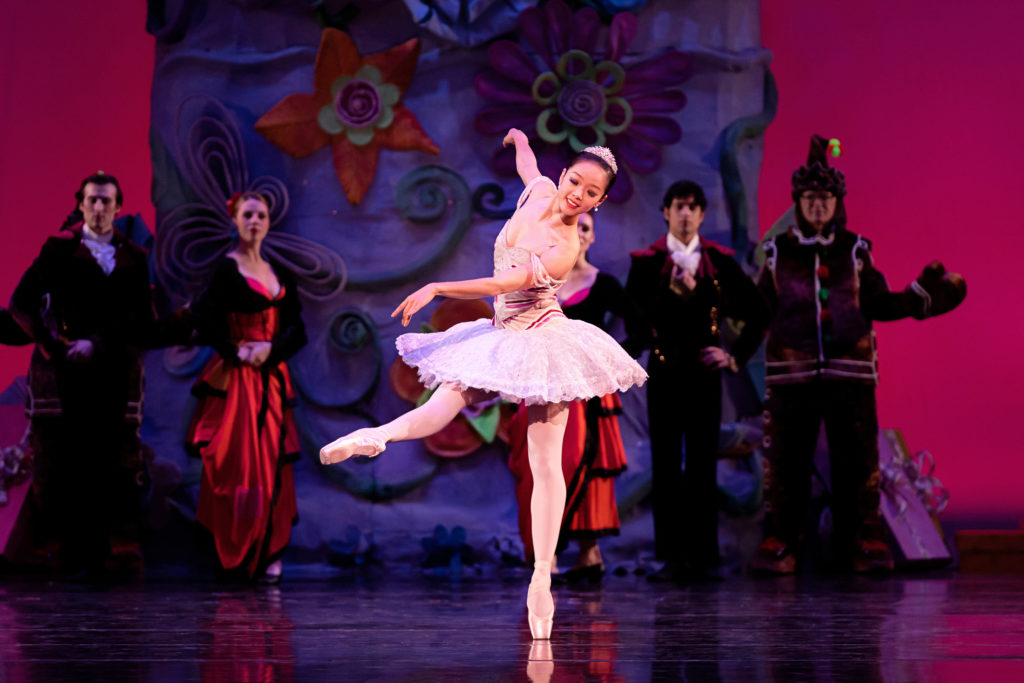
Try This Recovery Tip
One essential activity both Liu and Gonzalez do between performances is to lie down with their legs up on the wall for around 15 minutes. McIntyre says this can be a good relaxation activity and also help improve circulation after moving for long periods of time. “Just make sure you are coming out of the position slowly off the floor and give your body a chance to warm up again prior to dancing,” she advises.
Icing 411
Some dancers ice, including immersions in a bath or bucket, between shows. But McIntyre warns that the body needs an ample rewarming period afterwards.
“Typically, we suggest rewarming for double the time that you iced,” says McIntyre. “For example, if you took an ice bath for 15 minutes, you need to allow the tissue to rewarm for 30 minutes in order to return to its normal temperature. This is in addition to a body warm-up you would do before dancing again.”
Given the amount of time it takes to warm back up safely, McIntyre suggests icing may be best saved for the end of the day, especially since some research indicates ice baths can help bring the body temperature down to prepare for sleep.
Tools of the Trade
Gonzalez has a box of “wellness toys” she uses throughout the day, including a variety of rollers and massage tools. “The most useful tool for me is a foam roller; you can do everything with it—massage and stretch.”
McIntyre says foam rolling can help get blood flowing to a particular area and also facilitate recovery postshow. “Just be cautious not to overdo it and bruise yourself or create soreness.”
She also says evidence suggests compression garments (socks, sleeves, tights) can help relieve soreness and improve circulation. “That’s something a dancer can wear before shows, in between performances, or on their way home to help facilitate recovery.”
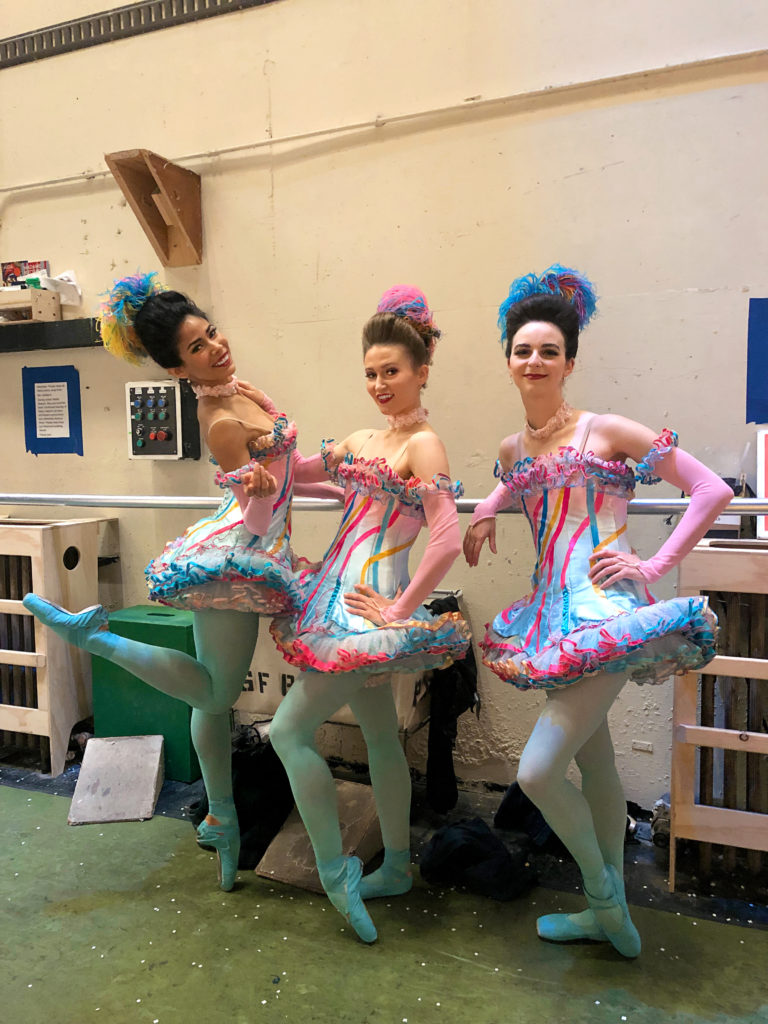
Staying Fueled
Keeping your energy going throughout the day also depends on the “gasoline in your tank,” says Marie Elena Scioscia, MS, RD, CDN.
“The number-one fuel source for dancers is carbohydrates, such as whole grains, breads, cereals, pastas, potatoes, fruits and vegetables,” says Scioscia, the nutritionist for The Ailey School. “The American College of Sports Medicine suggests that approximately 50 to 55 percent of what dancers eat should come from that group.”
Scioscia says the most important meal to set dancers up for a big performance day is a breakfast that includes carbohydrates (such as oatmeal, a bagel, pancakes or toast) mixed with protein and fat (yogurt, scrambled eggs or nuts).
For a 2 pm matinee, Scioscia suggests eating lunch around 11:30 am or noon. An example meal could be a salad with protein like tuna, chicken or hard-boiled eggs; sliced potatoes for carbohydrates; and a drizzle of olive oil for a little fat.

In between shows, Scioscia says, dancers should replenish with carbohydrates such as oatmeal, cereal, bagel, toast, pasta, or pretzels and milk (either regular or chocolate). A fruit and yogurt smoothie can also be helpful if you are in a rush.
“A snack between 300 and 400 calories should hold a dancer through to the evening show, but it depends on what their intake has been during the day (breakfast and lunch).” If you prefer to eat an early dinner in between performances, you want a “combo of protein, carbohydrates and fat well before the second show,” says Scioscia. Liu likes to have a “pretty decent meal,” such as rice and chicken, around 5 pm, followed by a banana before the show.
What About Caffeine?
Liu has learned to avoid drinking coffee before performances, which she says makes her shaky and anxious. Scioscia says that, in general, two cups of coffee a day can be considered ballet- and dance-friendly, but you should test this out before performance day. “Caffeine can be very stimulating, so a cup before that evening show might keep you up all night.”
“Everyone’s body is so different,” she continues. “Well before Nutcracker season, dancers should begin experimenting with what feels good to them, so they know what foods they can rely on during super-busy times that won’t upset their stomach.”
Listen and Communicate
Gonzalez reminds dancers that Nutcracker is a marathon, not a sprint. “A lot of younger dancers, especially, feel that they have to really push during these back-to-back performances because they want to look good, even if they feel they are about to get injured,” she says. “Listen to your body and know that it’s okay to be communicative with your rehearsal director when you need to take it easy.”
Staying Motivated
After a long, busy season, Nutcracker can feel a bit like running on autopilot, but Gonzalez has some words of motivation: “There will always be that little boy or girl watching Nutcracker for the first time. It might be the 20th time you are dancing ‘Waltz of the Flowers,’ but it’s that little child’s first time seeing it, so what do you want them to feel? That thought always sparks something inside me. It’s our job to bring the magic.”
